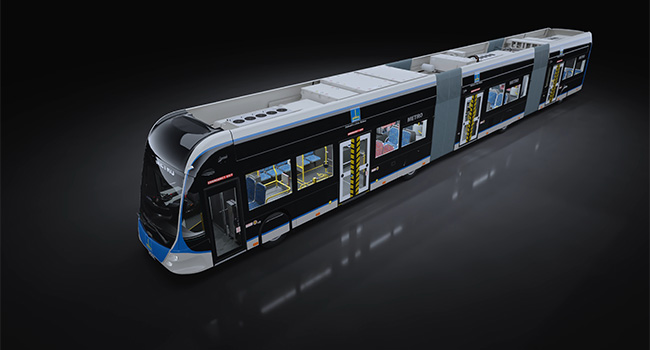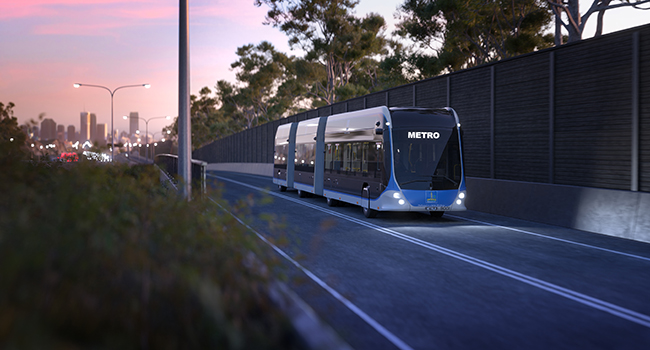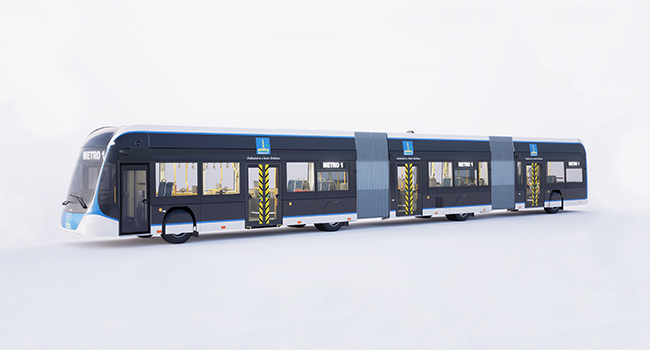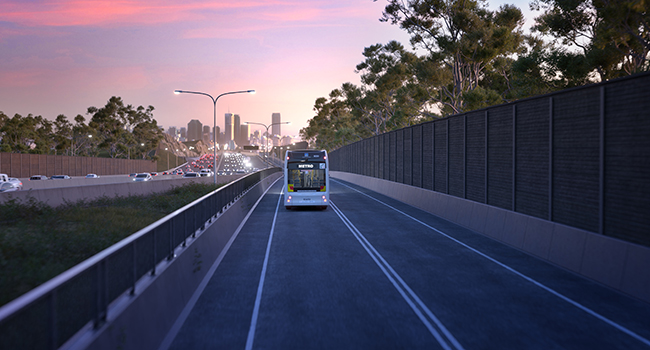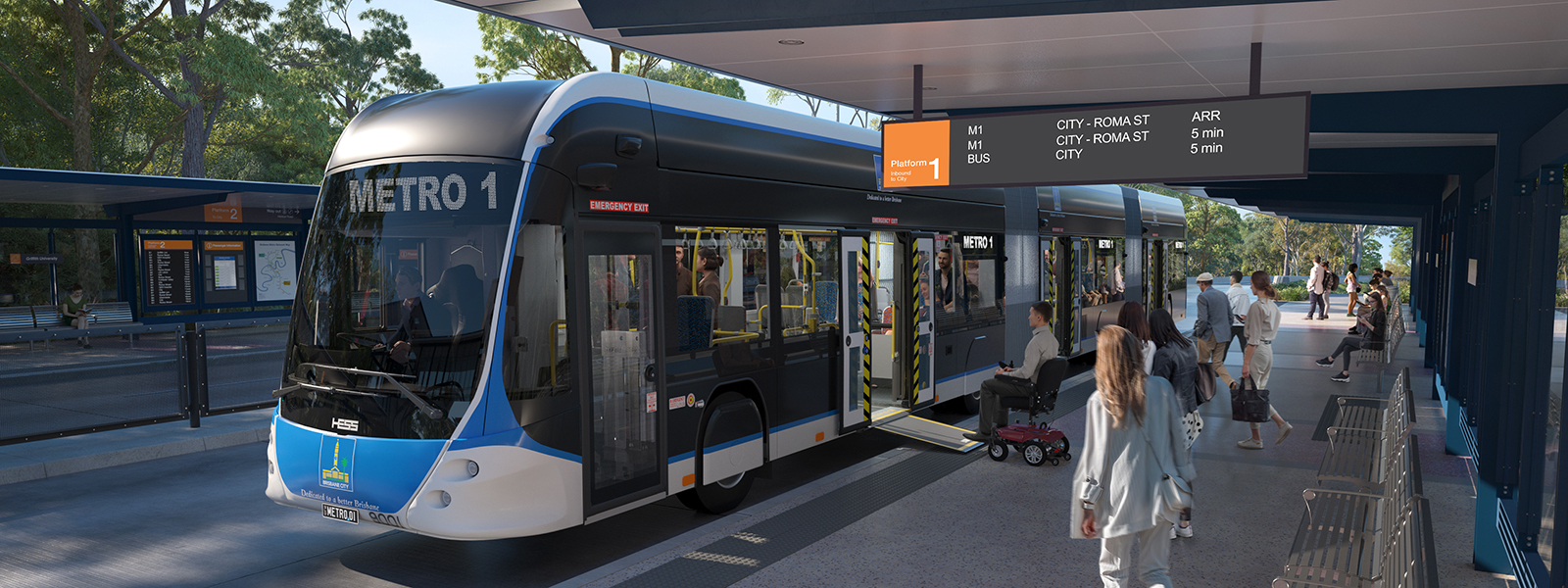
Metros

As part of Brisbane Metro, Brisbane City Council is introducing a new fleet of 60 fully electric, high‑capacity metros, which will integrate seamlessly into busway operations, operating along dedicated busways, as part of a better planned network.
Council is working with world-leading vehicle manufacturer HESS, electric infrastructure experts Hitachi Energy and leading manufacturer Volgren to deliver the metro fleet and charging infrastructure.
Following the successful trial of the pilot metro, Council has placed the order for the initial fleet of 59 metros, which will progressively arrive ahead of operations commencing in late 2024, subject to approvals.
Metro video and artist's impressions
You can also watch this video on Council's YouTube channel.
TURN-UP-AND-GO SERVICES
FULLy electric operation
OPERATING ALONG DEDICATED BUSWAYS
CAPACITY FOR 150 PASSENGERS
Metro features
Metros include the high-quality and high-capacity features of light rail while avoiding the need for tracks, overhead line equipment and infrastructure by utilising our existing busway. With a spacious bi-articulated design, metros comfortably transport 150 passengers and 170 passengers in event mode, enabling greater capacity on Brisbane’s public transport network.
Through a unique co-design process with the accessibility sector Brisbane Metro is aiming to exceed compliance with relevant disability standards and guidelines to help deliver Australia's leading accessible public transport option.
Key achievements include increasing the number and size of mobility aid bays and the number of priority seating areas, making this Australia’s leading accessible public transport option.
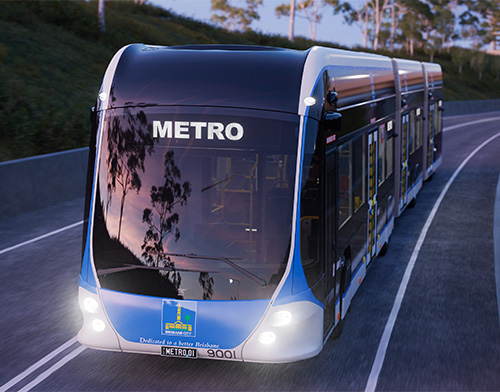
Passenger features
Passenger features
Passenger features of the metro include:
- capacity for 150 passengers and 170 in event mode
- three large double doors for efficient all door boarding
- passenger information displays and visual route information
- in-built USB charging points and on-board Wi‑Fi
- configurable LED lighting and an interior illuminated ceiling
- panoramic windows throughout.
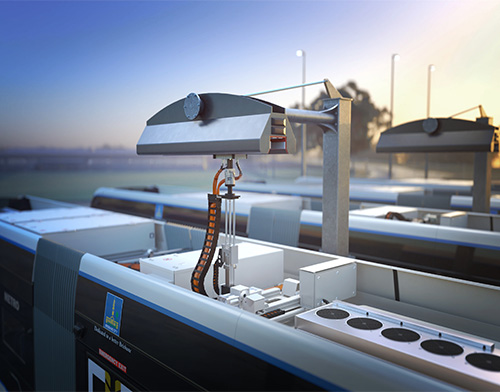
Technology features
Technology features
Technology features of the metro include:
- battery electric operation
- zero tailpipe emissions
- quiet operation, achieving significant reduction in noise pollution
- on-board telematics system providing real‑time travel information
- driver assistive technologies to support safe operations
- two of four axels propelled by electric motors for front and rear wheel steering
- flash charging in under six minutes at the end of route
- a regenerative braking system.
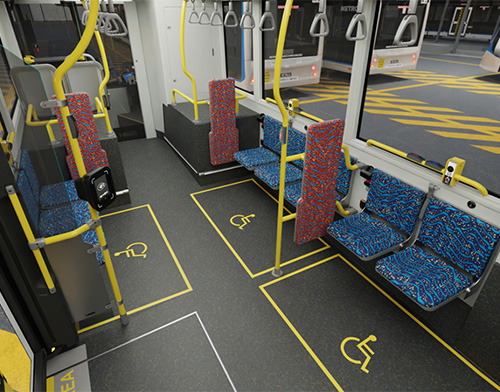
Accessibility features
Accessibility features
Accessibility features of the metro include:
- three large mobility aid bays in the first passenger compartment
- automated on-request ramp access at the first passenger door
- low-floor design from front to rear for accessible boarding
- 10 priority seats
- next stop audio and hearing loops in all compartments.
Pilot metro testing
Since arriving, the pilot metro has completed more than 800 tests and inspections across Greater Brisbane, with testing activities continuing into 2023.
During testing, you may see the pilot metro stopping at stations along the busways, with passenger doors opening and the automatic ramp deployed. The pilot metro will not be in passenger service during this time. Please do not attempt to board the pilot metro.
Watch our video on pilot metro testing at Mount Cotton on Council's YouTube channel.
Metro charging strategy
Metros are battery electric and require charging infrastructure to operate. The charging strategy chosen for Brisbane Metro will strike the balance between battery size and life, infrastructure impact and operational efficiency. There will be two types of charging equipment used to charge the metros: flash charging (Grid‑eMotion™) and CCS2 plug-in slow chargers.
Key features and benefits
15 x 600 kW flash charging at end of route locations
Flash charging in under six minutes
Flash charging is 85 times faster than general home electric vehicle charging
60 x 50 kW slow chargers at the metro depot
Slow charging supports battery conditioning
Charging infrastructure
The flash charging system will be the first of its kind in Australia and can charge a metro in under six minutes at the end of route locations. Flash charging will be delivered using overhead pantograph infrastructure. A pantograph is the moving equipment that autonomously connects to a charging point from the metro roof charging equipment.
Slow chargers will be used to charge the metros at the metro depot. Slow charging increases the metros battery lifespan and optimises energy consumption from Brisbane’s energy grid during off-peak periods. A Power Load Management system controls the slow charging at the metro depot and optimises the current draw from the grid to moderate peak loads.
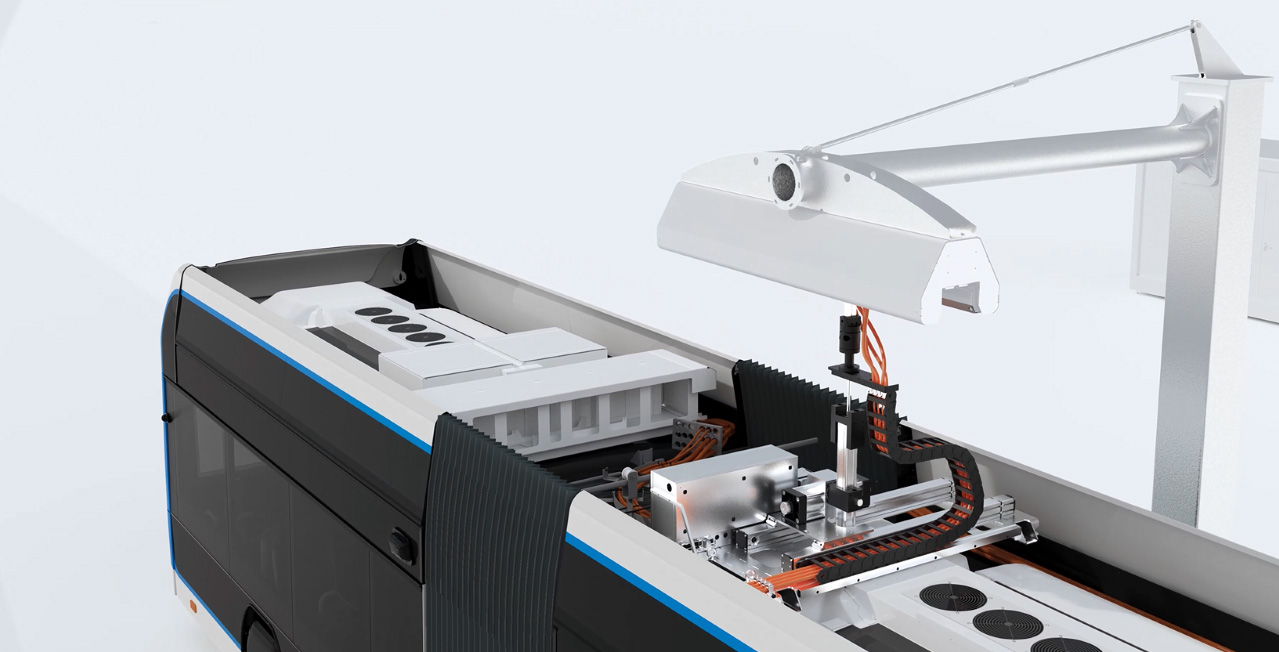
Metro charging infrastructure will be constructed and installed at the following locations:
- Herston: An end of route flash charging facility and metro layover area will be constructed at Ernie’s Roundabout within the existing bus layover area.
- Petrie Terrace: An end of route flash charging facility for metros will be constructed in the Inner Northern Busway adjacent to Countess Street.
- The University of Queensland: UQ Lakes station will be upgraded as well as providing end of route flash charging and layover area for metros.
- Rochedale: a new metro depot will house five flash chargers, as well as 60 slow chargers, and their supporting charging infrastructure.
Watch our video on pilot metro charger trials at Countess Street on Council's YouTube channel.
